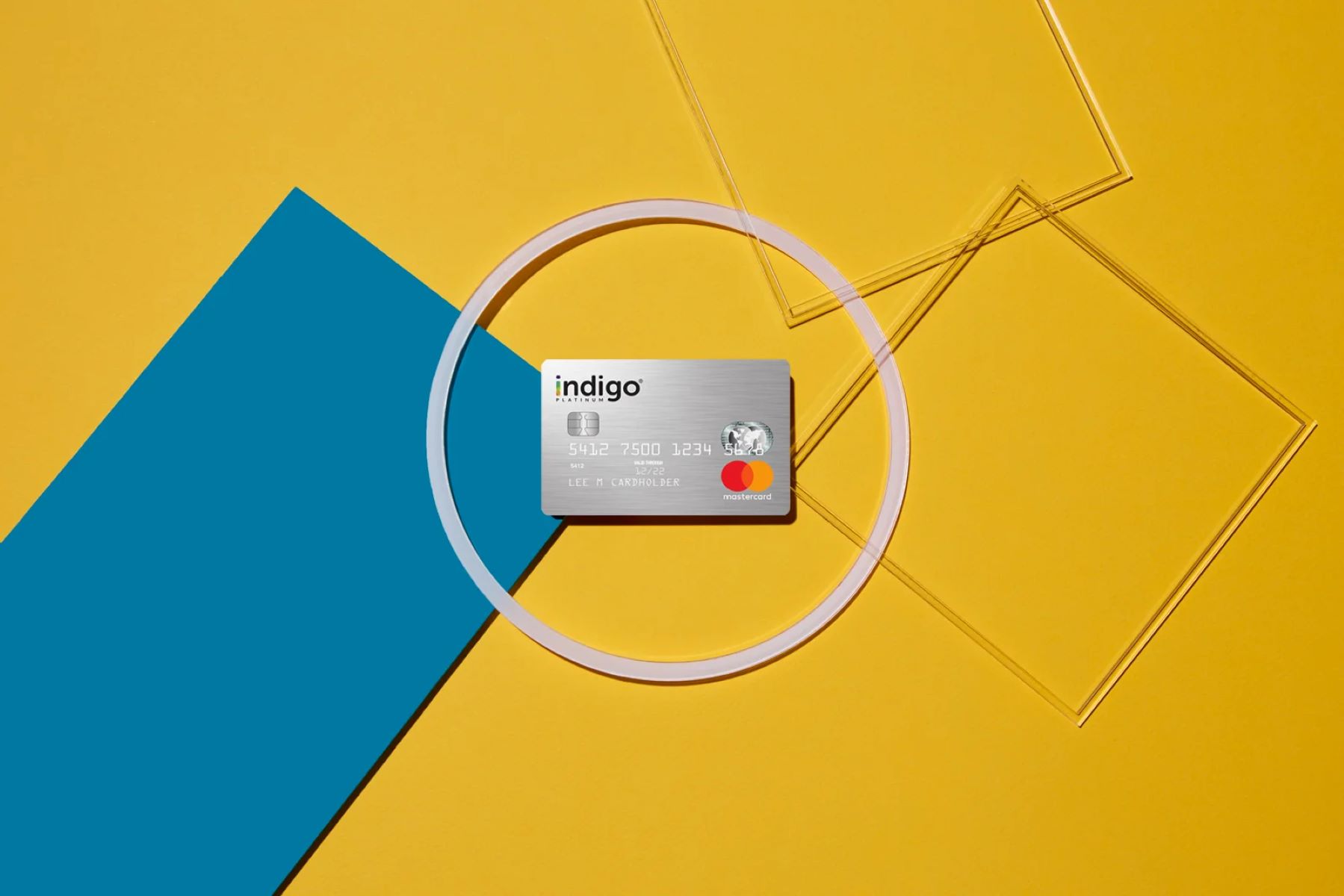

Finance
How Does Crowdfunding Work
Published: December 21, 2023
Learn all about how crowdfunding works and the role it plays in financing projects. Discover the benefits and processes involved in this innovative form of finance.
(Many of the links in this article redirect to a specific reviewed product. Your purchase of these products through affiliate links helps to generate commission for LiveWell, at no extra cost. Learn more)
Table of Contents
- Introduction
- Types of Crowdfunding
- How Crowdfunding Platforms Work
- Creating a Crowdfunding Campaign
- Setting Funding Goals
- Rewards-Based Crowdfunding
- Equity Crowdfunding
- Peer-to-Peer Lending
- Donation-Based Crowdfunding
- Securities-Based Crowdfunding
- Kickstarter Success Stories
- Risks and Challenges of Crowdfunding
- Conclusion
Introduction
Crowdfunding has emerged as a powerful and innovative method of raising funds for various projects or ventures, enabling individuals or businesses to obtain financial support from a large number of people. With the rise of the internet and social media, crowdfunding has transformed the traditional fundraising landscape, making it accessible to a global audience.
This financing model allows individuals, startups, non-profit organizations, and even established companies to bypass traditional methods of seeking funding, such as bank loans, venture capital, or grants. Instead, they can turn to crowdfunding platforms to connect with potential backers who are interested in supporting their projects or ideas.
One of the key advantages of crowdfunding is that it provides an avenue for individuals to engage directly with their audience and build a community around their project or cause. This not only helps to raise funds, but it also generates valuable feedback, market validation, and early adopters who can become loyal customers or advocates.
Crowdfunding encompasses various types, including rewards-based crowdfunding, equity crowdfunding, peer-to-peer lending, donation-based crowdfunding, and securities-based crowdfunding. Each type has its own unique characteristics, benefits, and potential pitfalls.
In this article, we will explore the different types of crowdfunding and how crowdfunding platforms work. We will also delve into the process of creating a crowdfunding campaign, determining funding goals, and the various risks and challenges associated with crowdfunding.
Whether you are an entrepreneur seeking startup capital, a creative artist looking to fund your next project, or an individual who wants to support a cause you are passionate about, understanding how crowdfunding works can help you navigate the world of alternative financing and maximize your chances of success.
Types of Crowdfunding
Crowdfunding encompasses various models that cater to different funding needs and objectives. Let’s take a closer look at the main types of crowdfunding:
- Rewards-Based Crowdfunding: This is the most common type of crowdfunding, where individuals or businesses offer a range of rewards or incentives to backers who contribute to their project. These rewards can vary from exclusive merchandise, early access to products, or special experiences. Platforms like Kickstarter and Indiegogo are popular examples of rewards-based crowdfunding.
- Equity Crowdfunding: Equity crowdfunding allows individuals to invest in a company in exchange for equity or shares. This type of crowdfunding is primarily utilized by startups or early-stage companies seeking funding. It enables investors to become shareholders and potentially benefit from the company’s growth and success. Equity crowdfunding platforms like SeedInvest and CircleUp facilitate these transactions.
- Peer-to-Peer Lending: Peer-to-peer lending, also known as P2P lending, connects borrowers directly with individual lenders. This type of crowdfunding bypasses traditional financial institutions, allowing borrowers to obtain loans at potentially lower interest rates, while lenders can earn interest on their investments. LendingClub and Prosper are examples of P2P lending platforms.
- Donation-Based Crowdfunding: Donation-based crowdfunding focuses on raising funds for charitable causes, personal emergencies, or community projects. Individuals or organizations create campaigns to gather donations from supporters who believe in their cause. Platforms like GoFundMe and Crowdrise facilitate donation-based crowdfunding.
- Securities-Based Crowdfunding: Securities-based crowdfunding allows startups and small businesses to raise funds by selling securities to accredited investors. This type of crowdfunding is regulated by securities laws and involves investors purchasing shares or debt instruments in the business. Platforms like StartEngine and Fundable facilitate securities-based crowdfunding campaigns.
It’s important to choose the right type of crowdfunding for your project or funding needs. Consider factors such as the nature of your project, your target audience, and the level of control or financial return you are seeking. Each type has its own advantages and considerations, so thorough research is vital before deciding which route to pursue.
How Crowdfunding Platforms Work
Crowdfunding platforms play a crucial role in connecting project creators with potential backers. These online platforms provide a marketplace where individuals or businesses can showcase their projects and solicit financial support. Here’s a breakdown of how crowdfunding platforms typically work:
– Registration: To get started, project creators need to register an account on the crowdfunding platform of their choice. They will be required to provide essential information about themselves, their project, and their funding goals.
– Project Presentation: Once registered, project creators create an appealing and comprehensive presentation of their project. This includes a compelling description, images, videos, and any other media that can help convey the project’s value and goals. This presentation is crucial in capturing the attention and interest of potential backers.
– Fundraising Period: Project creators set a specific duration for their fundraising campaign, during which they actively promote their project and encourage people to contribute. It is essential to set a realistic and achievable timeframe to generate momentum and maintain backers’ engagement.
– Backer Contributions: Crowdfunding platforms enable backers to contribute financially to projects they find interesting or worthwhile. Backers can choose to donate a specific amount, invest in equity, lend money, or pre-purchase a product or service offered by the project creator.
– Payment Processing: Crowdfunding platforms typically handle the payment processing for both project creators and backers. This ensures a secure and seamless transaction process. Platforms may deduct a small fee or a percentage of the funds raised as their service fee.
– Communication and Updates: Throughout the campaign, project creators engage with backers through the platform’s messaging system, providing updates on the project’s progress, addressing questions, and expressing gratitude for the support received. Regular communication helps to maintain transparency and build trust with backers.
– Fundraising Goal: Project creators set a funding goal for their campaign, indicating the amount of money they aim to raise. It is essential to carefully determine the funding goal, factoring in the costs associated with the project, manufacturing, marketing, and any potential fees or taxes.
– All-or-Nothing vs. Keep-It-All: Some crowdfunding platforms operate on an “all-or-nothing” model, meaning that if the funding goal is not met within the specified timeframe, all contributions are refunded, and the project creator does not receive any funding. In contrast, the “keep-it-all” model allows project creators to retain the funds they raised, regardless of whether they reached their funding goal.
– Completion and Fulfillment: Once the campaign ends successfully, project creators move forward with executing their project plans. For product-based campaigns, this involves manufacturing and delivering rewards to backers. It is crucial to communicate any delays or challenges and ensure timely fulfillment of commitments made during the campaign.
Crowdfunding platforms provide an invaluable opportunity for individuals or businesses to showcase their projects, gain exposure to a wide audience, and secure financial support from interested backers. By understanding how these platforms work and carefully navigating the crowdfunding process, project creators can increase their chances of a successful fundraising campaign.
Creating a Crowdfunding Campaign
Creating a successful crowdfunding campaign requires careful planning, strategic execution, and effective communication. Here are some key steps to consider when creating your crowdfunding campaign:
– Define Your Project: Clearly articulate the purpose, goals, and uniqueness of your project. Explain why it is important and how it will benefit potential backers.
– Research and Select a Platform: Explore different crowdfunding platforms and choose the one that aligns with your project’s type and needs. Consider factors like fees, target audience, success stories, and platform policies.
– Set a Realistic Funding Goal: Determine the amount of funds you need to bring your project to life, taking into account production costs, marketing expenses, and any other relevant expenses. Be realistic and transparent about your funding goal with potential backers.
– Create an Engaging Project Page: Craft a compelling project description that showcases the value proposition of your project. Use high-quality images, videos, and infographics to visually capture the attention of potential backers.
– Reward Structure: Design a range of attractive and enticing rewards for different contribution levels. Consider offering exclusive merchandise, early access, or unique experiences that align with your project.
– Develop a Marketing Strategy: Outline a comprehensive marketing plan to promote your crowdfunding campaign. Utilize social media platforms, email marketing, influencer outreach, and traditional media to reach your target audience.
– Create a Video: Develop a captivating and informative video that tells your project’s story and engages viewers emotionally. A well-made video can significantly increase the chances of capturing people’s attention and securing their support.
– Communicate Your Why: Clearly communicate your motivation for starting the project and explain why it matters to you. Sharing your passion and enthusiasm will establish a connection with potential backers and demonstrate your dedication.
– Engage with Potential Backers: Interact with the crowdfunding community by responding to comments, answering questions, and expressing gratitude for the support you receive. Regularly update backers on the campaign’s progress to maintain their trust and engagement.
– Post-Campaign Communication: Once your campaign ends, continue communicating with your backers. Provide updates on the progress of the project, delivery timelines, and any challenges you may encounter. Transparency and clear communication are key to building strong relationships with your backers.
Remember, creating a successful crowdfunding campaign requires effort, perseverance, and a solid plan. By following these steps and staying committed to your project, you can increase your chances of reaching your funding goals and bringing your vision to life.
Setting Funding Goals
The funding goal of your crowdfunding campaign plays a critical role in determining its success. It is essential to set a realistic and achievable funding target that aligns with the scope and needs of your project. Here are some factors to consider when setting funding goals:
– Project Expenses: Calculate the total costs associated with your project, including production, manufacturing, marketing, shipping, and any other relevant expenses. Be thorough and detailed in your estimation to ensure you don’t underestimate the necessary funds.
– Stretch Goals: Consider including stretch goals in your campaign. These are additional funding targets that, if reached, allow for the implementation of extra features or enhancements to the project. Stretch goals can help maintain momentum and incentivize backers to continue supporting the campaign.
– Platform Fees: Take into account the fees charged by the crowdfunding platform. These fees typically range from 5% to 10% of the total funds raised. Make sure you account for these fees when setting your funding goal, as they will impact the amount you receive.
– Shipping and Fulfillment: If your project involves physical rewards, consider the costs of packaging, shipping, and fulfillment. These expenses can add up quickly, especially if you have a large number of backers from different regions. Factor in these costs when determining your funding goal.
– Contingency: It’s wise to add a contingency buffer to your funding goal to account for unexpected expenses or challenges that may arise during the project’s execution. A buffer of around 10% to 20% can help mitigate any unforeseen circumstances.
– Market Research: Conduct market research to assess the demand and potential reach of your project. Analyze similar projects or products in the market to gauge the level of interest and funding they received. This research can provide insights into setting a realistic funding goal.
– Audience and Network: Consider the size and engagement of your existing audience and network. If you have a larger audience or a strong support network, you may be able to set a higher funding goal. However, always ensure that your goal remains achievable based on the reach and influence of your network.
– Campaign Duration: The duration of your crowdfunding campaign can also impact your funding goal. A longer campaign may allow for a lower funding target, as it provides more time to reach the goal. Conversely, a shorter campaign may necessitate a higher funding goal to achieve success within the limited timeframe.
When setting your funding goal, strike a balance between being ambitious and realistic. Aim for a target that adequately covers project expenses while ensuring that it is attainable based on your resources, network, and market demand. Always communicate transparently with your backers about how the funds will be used and provide updates throughout the campaign to maintain their trust and support.
Rewards-Based Crowdfunding
Rewards-based crowdfunding is the most common type of crowdfunding, where project creators offer a range of rewards or incentives to backers who contribute to their campaign. This model allows individuals or businesses to collect funds in exchange for non-monetary benefits. Here’s how rewards-based crowdfunding works:
– Offering Rewards: Project creators define a tiered system of rewards based on different contribution levels. These rewards can include exclusive merchandise, early access to products or services, personalized experiences, or other creative offerings. The rewards should be enticing and aligned with the project to incentivize backers to contribute.
– Tiers and Pledge Levels: Rewards are typically organized into tiers, with higher-value rewards associated with higher contribution levels. For example, a project may offer a small token of appreciation for a lower-level pledge, while a higher-level pledge may include a more substantial reward or exclusive access.
– Communication: Clear and effective communication with backers is crucial in rewards-based crowdfunding. Project creators should provide detailed information about the rewards, including specifications, delivery timelines, and any limitations or exclusions. Regular updates keep backers engaged and informed throughout the campaign.
– Managing and Fulfilling Rewards: Project creators need to carefully plan and manage the fulfillment process for rewards. This involves manufacturing or procuring the rewards, tracking backer preferences, and ensuring timely delivery. Proper organization and communication help maintain backers’ trust and satisfaction.
– Creating a Sense of Community: Rewards-based crowdfunding campaigns often focus on building a community and involving backers in the project’s development. Project creators can foster a sense of belonging and engagement by involving backers in decision-making processes or offering exclusive behind-the-scenes updates.
– Risk and Challenges: One challenge with rewards-based crowdfunding is managing expectations and ensuring timely delivery of rewards. Project creators must accurately estimate production and shipping timelines to avoid disappointing backers. They should also anticipate potential obstacles or delays that may arise during the fulfillment process.
– Building Brand Loyalty: Rewards-based crowdfunding provides an opportunity for project creators to cultivate a loyal base of supporters and early adopters. By delivering high-quality rewards and providing excellent customer service, project creators can create a positive impression that translates into long-term brand loyalty.
Rewards-based crowdfunding not only provides project creators with the necessary funds to bring their ideas to life but also fosters a sense of community and support. It allows backers to contribute to projects they believe in while receiving unique rewards and experiences in return. By effectively managing rewards and maintaining open communication, rewards-based crowdfunding can be a powerful tool for project creators looking to engage their audience and turn ideas into reality.
Equity Crowdfunding
Equity crowdfunding is a type of crowdfunding that enables individuals to invest in a company in exchange for equity or shares. It allows startups and early-stage companies to secure funding from a broad pool of investors, while giving investors a stake in the company’s future success. Here’s how equity crowdfunding works:
– Raising Capital: Companies seeking funding create a campaign on an equity crowdfunding platform. They provide detailed information about their business, financials, market potential, and growth plans to attract potential investors.
– Investor Participation: Individuals interested in investing in the company can study the campaign and evaluate the company’s potential. They can then choose to invest a specific amount based on their assessment of the opportunity.
– Offering Equity: In exchange for their financial investment, investors receive a share of the company, which is proportionate to the amount they invest. The equity obtained typically grants investors certain rights, such as attending shareholder meetings or receiving dividends if the company becomes profitable.
– Regulatory Compliance: Equity crowdfunding is subject to regulatory requirements and restrictions, which vary depending on the country or jurisdiction. These regulations are in place to protect investors and ensure transparency in the fundraising process. Companies and equity crowdfunding platforms must comply with these regulations to operate legally.
– Platform Facilitation: Equity crowdfunding platforms provide a marketplace for companies to showcase their investment opportunities and connect with potential investors. These platforms handle the legal and technical aspects of the investment process, such as compliance, documentation, and payment processing.
– Exit Opportunities: Investors in equity crowdfunding campaigns typically hope for a return on their investment in the future. This can be achieved through various exit opportunities, such as an initial public offering (IPO), acquisition by another company, or a buyback of the shares by the company itself.
– Investor Risks: Investing in equity crowdfunding carries inherent risks. Startups and early-stage companies have a higher likelihood of failure compared to established businesses. Investors must carefully evaluate the potential risks and rewards, conduct due diligence, and consider diversifying their investment portfolio.
– Access to Capital: Equity crowdfunding provides an alternative source of capital for startups and small businesses that may struggle to access traditional funding channels. It offers a broader investor base and the potential for networking and mentorship beyond just financial support.
Equity crowdfunding opens up investment opportunities to a wider range of individuals, allowing them to participate in the growth and success of innovative businesses. Similarly, it provides entrepreneurs with access to much-needed capital and a community of engaged investors. However, it is important for both investors and companies to understand the risks involved and ensure compliance with regulatory requirements to navigate equity crowdfunding successfully.
Peer-to-Peer Lending
Peer-to-peer (P2P) lending, also known as social lending or marketplace lending, is a type of crowdfunding that connects borrowers directly with individual lenders. Instead of relying on traditional financial institutions, P2P lending platforms facilitate loans between individuals. Here’s how peer-to-peer lending works:
– Borrower Application: Individuals or businesses in need of financing apply for a loan through a P2P lending platform. Borrowers provide information about their financial situation, creditworthiness, and the purpose of the loan.
– Lender Participation: On the other side, individual investors (lenders) review loan applications on the P2P lending platform and decide whether to fund the loan based on the borrower’s profile and risk assessment.
– Loan Terms and Interest Rates: P2P lending platforms determine the interest rates and loan terms based on the borrower’s risk profile and prevailing market conditions. The rates may vary based on factors such as credit score, loan duration, and the purpose of the loan.
– Loan Funding: Once a loan is approved, it is listed on the P2P lending platform for potential lenders to contribute funds. Lenders can choose to fund the full loan amount or a portion of it, diversifying their investments across multiple loans to spread the risk.
– Repayment and Interest: Borrowers repay the loan in installments, including both principal and interest, over a predetermined period. The P2P lending platform handles the collection of repayments and distributes them to the lenders accordingly.
– Default and Collections: In case of borrower default, P2P lending platforms typically have mechanisms in place to attempt collections or recourse procedures. The platform may work with collection agencies to recover outstanding funds or seek alternative solutions depending on the situation.
– Diversification and Risk Management: P2P lending allows lenders to diversify their investment across multiple loans, reducing the impact of any potential defaults. Lenders can assess each borrower’s risk profile and allocate their funds accordingly to manage the overall risk involved.
– Prosperity for Both Parties: P2P lending benefits both borrowers and lenders. Borrowers gain access to financing options outside of traditional banks, often at competitive rates. Lenders, in turn, have the opportunity to earn interest income on their investment, potentially achieving higher returns compared to traditional savings or investment products.
– Regulatory Compliance: P2P lending is subject to regulatory oversight in many countries, aiming to protect the interests of both borrowers and lenders. The regulations vary by jurisdiction and often include licensing requirements, investor protection measures, and financial reporting obligations for P2P lending platforms.
Peer-to-peer lending bridges the gap between borrowers and individual lenders, providing an alternative financing option that promotes financial inclusivity and efficiency. P2P lending platforms offer borrowers more choices, lower borrowing costs, and flexibility, while allowing lenders to support borrowers directly and potentially earn attractive returns on their investment.
Donation-Based Crowdfunding
Donation-based crowdfunding is a type of crowdfunding where individuals or organizations raise funds from a collective group of people who believe in their cause or project. Unlike other forms of crowdfunding, donation-based crowdfunding does not involve any financial return or equity. Here’s how donation-based crowdfunding works:
– Cause or Project: Individuals or organizations create a campaign to raise funds for a specific cause, project, or charitable undertaking. The campaign typically includes details about the purpose, goals, and impact of the project.
– Storytelling: To connect with potential donors and inspire them to contribute, the campaign emphasizes storytelling. It conveys a compelling narrative that explains why the cause or project matters, who it will benefit, and how the funds will be used to make a difference.
– Fundraising Goal: Campaign organizers set a specific funding target that represents the amount they aim to raise. The goal should be realistic and tied to the costs associated with the cause or project, such as medical expenses, community initiatives, social causes, or disaster relief efforts.
– Donation Options: Donation-based crowdfunding platforms allow individuals to make contributions of varying amounts, often with the flexibility to choose their preferred donation level. Some platforms enable recurring donations, allowing supporters to contribute on an ongoing basis.
– Perks or Incentives: While donation-based crowdfunding does not involve financial returns, campaign organizers can offer non-monetary perks or incentives to express gratitude to donors. These perks can range from personalized thank-you notes, exclusive updates, or recognition on a donor wall or website.
– Sharing and Social Media: Sharing the campaign through social media channels and other platforms is crucial to maximize visibility and reach a wider audience. Campaign organizers and supporters can leverage their networks to spread the word and encourage others to donate.
– Transparency and Accountability: Campaign organizers have a responsibility to maintain transparency and accountability throughout the process. They should regularly update donors on the progress of the campaign, share stories of impact, and provide financial reports to assure donors that their contributions are making a difference.
– Engagement and Gratitude: Building a sense of community and engagement with donors is essential in donation-based crowdfunding. Campaign organizers should express gratitude, provide updates, and involve donors in the journey to demonstrate the impact of their contributions.
– Tax-Deductible Donations: In some cases, donations made through donation-based crowdfunding platforms may be tax-deductible, depending on the jurisdiction and the organization’s nonprofit status. Donors should check the tax implications and consult with relevant authorities for accurate information.
Donation-based crowdfunding empowers individuals and organizations to rally support and financial contributions from a broad community of compassionate individuals. It provides a platform for various charitable causes, grassroots initiatives, social projects, and community support, enabling individuals to make a tangible impact through their contributions.
Securities-Based Crowdfunding
Securities-based crowdfunding is a type of crowdfunding that allows startups and small businesses to raise capital by selling securities, such as shares or debt instruments, to a broad range of investors. Unlike other types of crowdfunding, securities-based crowdfunding provides investors with a financial stake in the company and the potential for a return on their investment. Here’s how securities-based crowdfunding works:
– Regulatory Compliance: Securities-based crowdfunding is subject to regulatory oversight and compliance with securities laws. These regulations vary by country or jurisdiction and are designed to protect investors and ensure transparency in the fundraising process. Companies and crowdfunding platforms must comply with these regulations for conducting securities-based crowdfunding legally.
– Offering Securities: Companies seeking funding define the type of securities they will offer, such as equity shares, convertible notes, revenue-sharing agreements, or debt instruments. They provide detailed information about their business, financials, market potential, and growth plans to attract potential investors.
– Investor Participation: Investors evaluate the investment opportunity presented by the company and assess its potential risks and rewards. They can choose to invest a specific amount based on their analysis of the investment’s attractiveness and aligning it with their investment goals.
– Funding Goals and Investment Limits: Crowdfunding campaigns for securities-based offerings generally have defined funding goals, and companies set a minimum investment amount required per investor. Regulatory limits may exist on the total amount a company can raise through securities-based crowdfunding and the maximum amount an individual investor can invest.
– Investor Rights and Returns: By investing in securities-based crowdfunding, investors typically gain certain rights, such as voting rights, dividends, or a share of future profits. The specific rights and potential returns depend on the type of securities offered and the terms of the investment.
– Secondary Market Opportunities: In some cases, securities-based crowdfunding may provide secondary market opportunities for investors to buy or sell their securities before the company goes public or exits. These secondary markets provide liquidity and flexibility for investors to manage their investment portfolio.
– Investment Risks: Investing in securities carries inherent risks, including the potential loss of the invested capital. Startups and early-stage businesses are inherently risky, and investors must carefully assess the potential risks and rewards before making an investment. Conducting due diligence and understanding the company’s business model, competitive landscape, and management team is crucial.
– Access to Capital: Securities-based crowdfunding expands access to capital for startups and small businesses by offering a wider pool of potential investors. It provides an alternative source of funding beyond traditional financing options, such as bank loans or venture capital, and allows companies to tap into the collective resources and expertise of a diverse investor base.
– Investor-Directed Impact: Securities-based crowdfunding empowers individual investors to directly support companies and industries they believe in. It allows them to actively participate in funding innovative ideas and projects that align with their personal values and investment objectives.
Securities-based crowdfunding offers a unique opportunity for companies to raise capital directly from investors and for individuals to invest in promising ventures. However, it is important for both companies and investors to understand and comply with the legal and regulatory requirements and carefully evaluate the risks and potential returns associated with securities-based crowdfunding.
Kickstarter Success Stories
Kickstarter, one of the pioneering and popular rewards-based crowdfunding platforms, has seen numerous success stories over the years. Here are a few notable examples of projects that achieved remarkable success through Kickstarter:
– Pebble Time: Pebble Time, a smartwatch company, launched its first crowdfunding campaign on Kickstarter in 2012. Their campaign became the most funded project in Kickstarter’s history at the time, raising over $20 million. The success allowed Pebble to revolutionize the smartwatch market and become a major player in the industry.
– Oculus Rift: The Oculus Rift virtual reality headset gained widespread attention and support after launching its Kickstarter campaign in 2012. Their goal was to raise $250,000, but they quickly exceeded expectations and raised over $2.4 million. Oculus Rift was subsequently acquired by Facebook, further accelerating the development of virtual reality technology.
– Exploding Kittens: An unconventional card game called Exploding Kittens garnered massive support on Kickstarter. Created by a team of game designers, including Matthew Inman of The Oatmeal, the campaign raised over $8.7 million, becoming one of the most successful Kickstarter projects in the games category.
– Coolest Cooler: The Coolest Cooler campaign became a sensation on Kickstarter, raising over $13 million. Designed as a versatile cooler with built-in features like a blender, Bluetooth speakers, and USB chargers, the campaign captured the interest of backers looking for a multifunctional outdoor companion.
– Reading Rainbow: The beloved educational television series Reading Rainbow successfully launched a Kickstarter campaign to bring its program to a new generation of children through an online platform. The campaign exceeded its initial goal of $1 million and raised over $5.4 million, allowing Reading Rainbow to expand its digital reach and create new educational materials.
– Peak Design’s Everyday Backpack: Peak Design’s Kickstarter campaigns for their Everyday Backpack and other innovative photography accessories have consistently achieved stellar results. Their products, designed with a focus on functionality and aesthetics, have garnered significant support from photography enthusiasts and professionals worldwide.
These success stories illustrate the power of Kickstarter in helping individuals and businesses bring innovative ideas to life. They showcase the potential for projects to resonate with a community of backers who are passionate about supporting unique and creative endeavors.
Kickstarter’s platform has played a pivotal role in launching many successful businesses and products. It has provided a launchpad for innovative concepts, demonstrated the market demand for novel ideas, and created a strong community around creative projects.
Not every Kickstarter campaign achieves such remarkable success, but these stories serve as inspiration and motivation for aspiring creators and entrepreneurs. They highlight the potential impact and possibilities that can be realized through the support of a passionate backer community.
Risks and Challenges of Crowdfunding
While crowdfunding offers numerous benefits and opportunities, it also comes with its fair share of risks and challenges. Here are some of the key risks and challenges associated with crowdfunding:
– Failure to Reach Funding Goal: One of the primary risks in crowdfunding is not reaching the funding goal. If a campaign fails to meet its target, backers’ contributions are often refunded, and the project creator does not receive any funds. Setting a realistic funding goal and implementing effective marketing and promotion strategies is crucial to overcome this challenge.
– Competition and Market Saturation: Crowdfunding platforms have become increasingly saturated with projects, making it more challenging to stand out and capture the attention of potential backers. With thousands of campaigns vying for limited attention, it is essential to develop a unique value proposition and engage in targeted marketing efforts to differentiate yourself from other projects.
– Fulfillment Challenges: Fulfilling rewards or delivering on promises made during the campaign can be a logistical challenge. Managing production, shipping, and customer service can become complex, especially if the campaign attracts a large number of backers. Delays or issues in fulfillment can lead to dissatisfaction and damage the reputation of the project creator.
– Intellectual Property and Idea Theft: Sharing innovative ideas and concepts on crowdfunding platforms opens the risk of intellectual property theft or idea copying by unscrupulous individuals or companies. Project creators must take appropriate measures to protect their intellectual property rights before launching a campaign.
– Legal and Regulatory Compliance: Different types of crowdfunding, such as equity or securities-based crowdfunding, are subject to specific legal and regulatory requirements. Non-compliance with these regulations can lead to legal consequences or the suspension of a campaign. Project creators must understand and adhere to applicable laws and industry regulations.
– Oversaturation of Backer Market: The crowdfunding marketplaces can become oversaturated with projects, leading to “backer fatigue.” Backers may feel overwhelmed by the numerous campaigns and become hesitant to support new projects. Standing out from the crowd and maintaining backers’ interest requires a compelling story, engaging communication, and a well-executed marketing strategy.
– Project Execution Challenges: Successfully executing a project requires careful planning, resource management, and effective project management. Challenges such as manufacturing delays, supply chain issues, or unexpected hurdles can occur, leading to project setbacks or failure. Project creators must be prepared to navigate these challenges and communicate transparently with backers.
– Risk of Negative Backer Feedback: Backers have the ability to provide feedback and voice their opinions on crowdfunding platforms. Negative feedback, complaints, or dissatisfaction from backers can impact the project’s reputation and future success. Maintaining open communication, addressing concerns promptly, and delivering on promises are crucial to minimize negative feedback.
While crowdfunding provides unique opportunities, navigating these risks and challenges is essential for a successful campaign. Project creators must carefully plan, set realistic expectations, communicate transparently, and fulfill their commitments to build trust and maintain a positive relationship with backers. By understanding and addressing these challenges, crowdfunding campaigns can increase their chances of achieving their funding goals and turning their visions into reality.
Conclusion
Crowdfunding has emerged as a powerful and accessible funding option for individuals, startups, and organizations. It provides a platform to connect with a diverse community of backers, bringing innovative ideas to life and supporting charitable causes. By understanding the various types of crowdfunding and navigating the challenges associated with this fundraising model, project creators can maximize their chances of success.
Whether through rewards-based crowdfunding, equity crowdfunding, peer-to-peer lending, donation-based crowdfunding, or securities-based crowdfunding, individuals and businesses can tap into the collective power of the crowd to raise funds and generate support. Each type of crowdfunding offers its own benefits and considerations, allowing project creators to choose the most suitable approach for their specific goals and needs.
However, it is important to recognize the risks and challenges that come with crowdfunding. From setting realistic funding goals, to managing fulfillment and maintaining open communication with backers, project creators must be prepared to address these potential hurdles and mitigate any negative impact on their campaigns. Compliance with relevant regulations and protection of intellectual property rights are also crucial factors to consider.
Despite the inherent risks, crowdfunding has witnessed numerous success stories across platforms like Kickstarter, where groundbreaking products and projects have prospered with the support of passionate backers. These success stories highlight the transformative potential of crowdfunding, enabling individuals and businesses to bring their visions to life, reach a wider audience, and access the capital necessary for growth and innovation.
In conclusion, crowdfunding presents an exciting and dynamic avenue for fundraising, offering opportunities for entrepreneurs, creatives, and philanthropists alike. By leveraging crowdfunding platforms, individuals can plant the seeds of innovation, build communities of supporters, and transform ideas into reality. Success in crowdfunding hinges on strategic planning, effective communication, and a commitment to deliver on promises made to backers. With the right approach and a compelling story, the possibilities are limitless in the world of crowdfunding.














